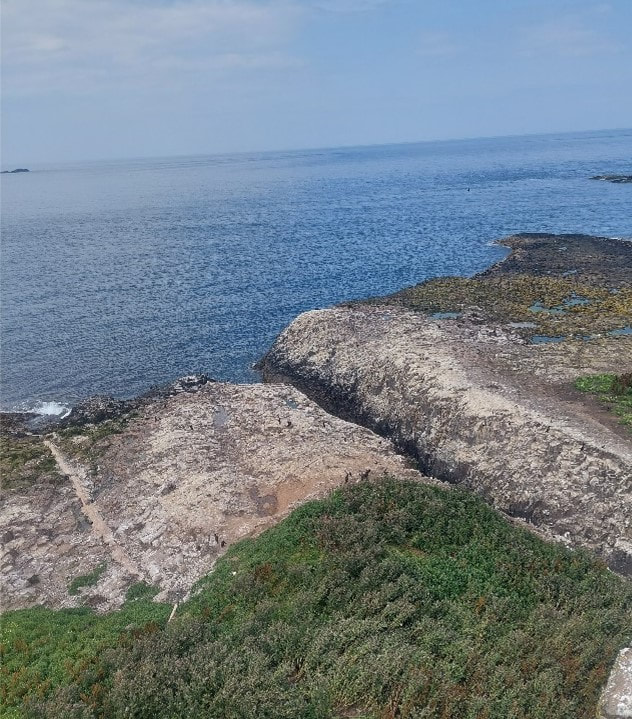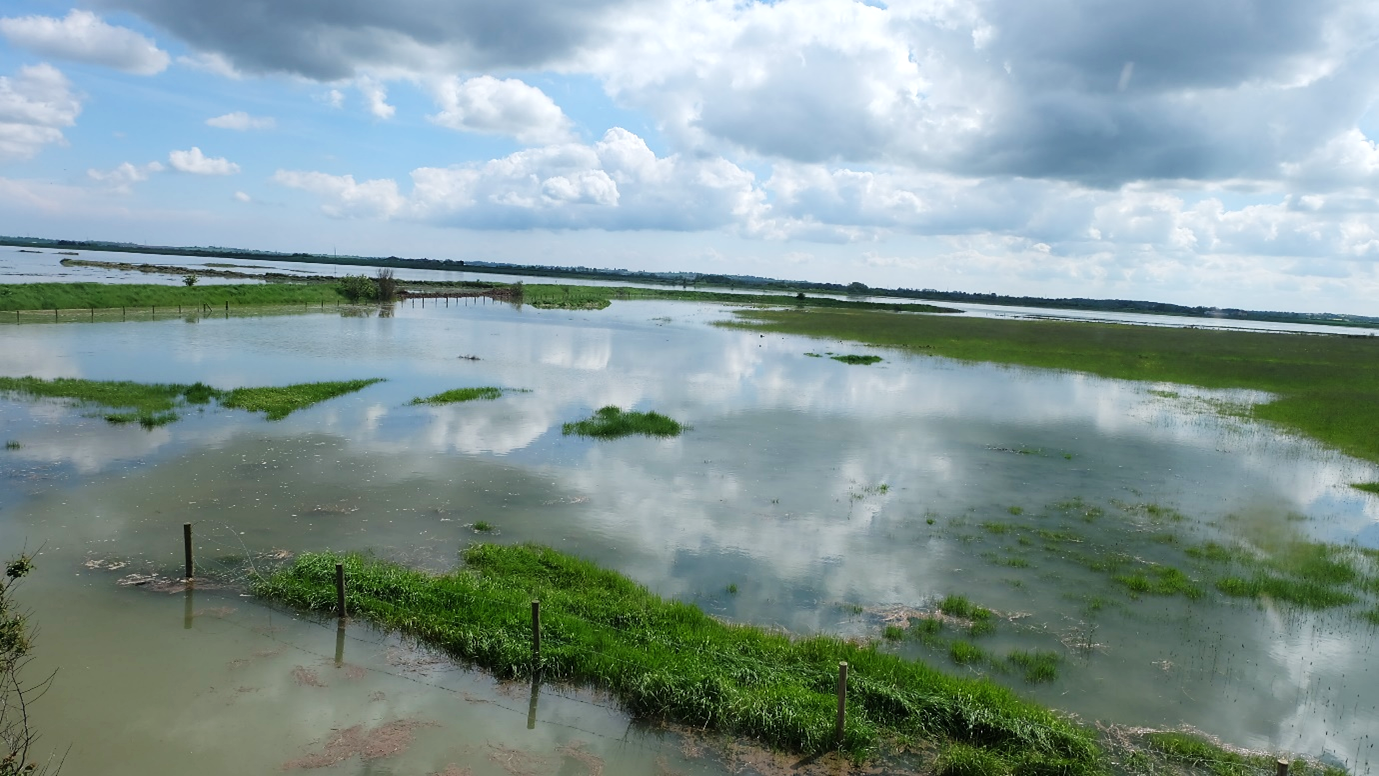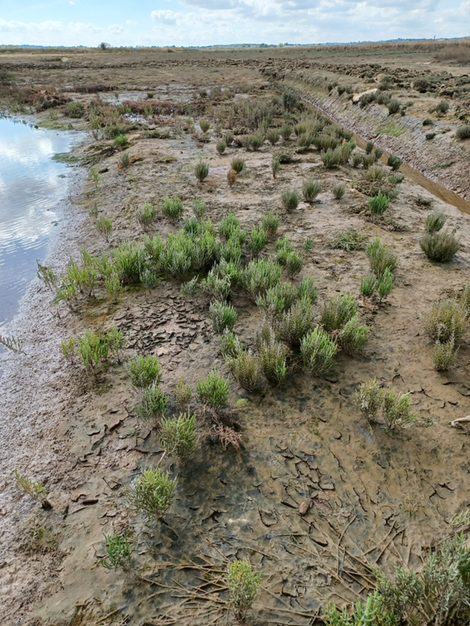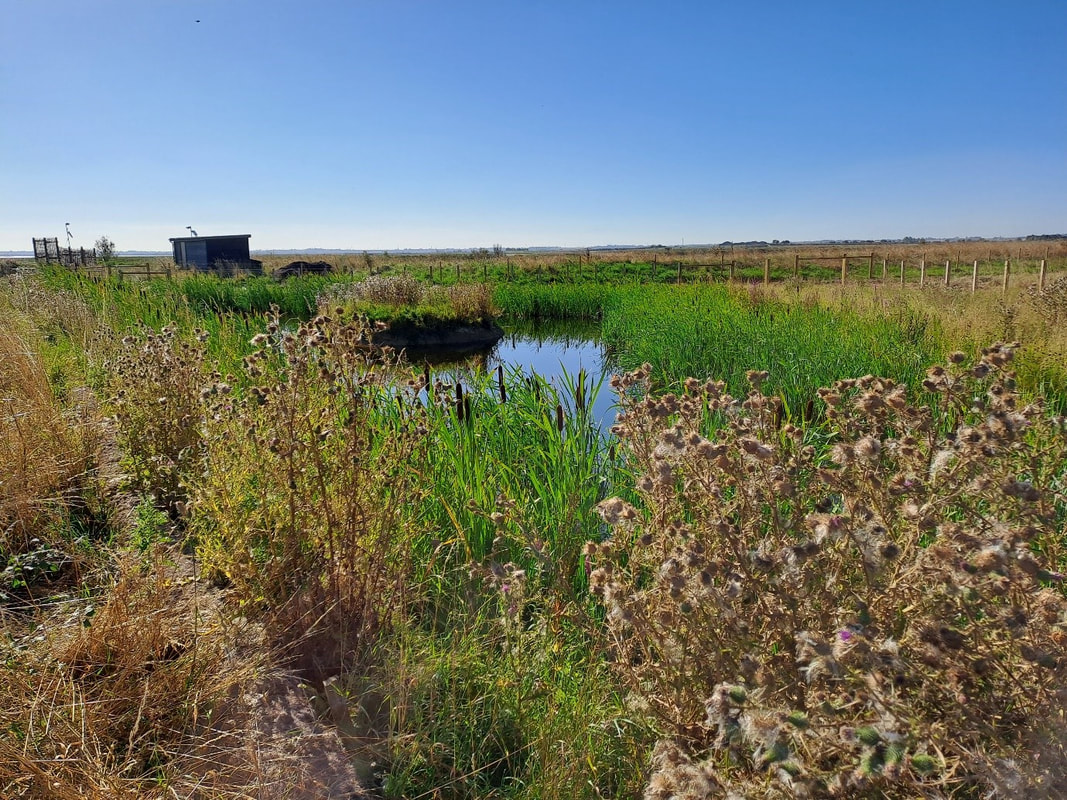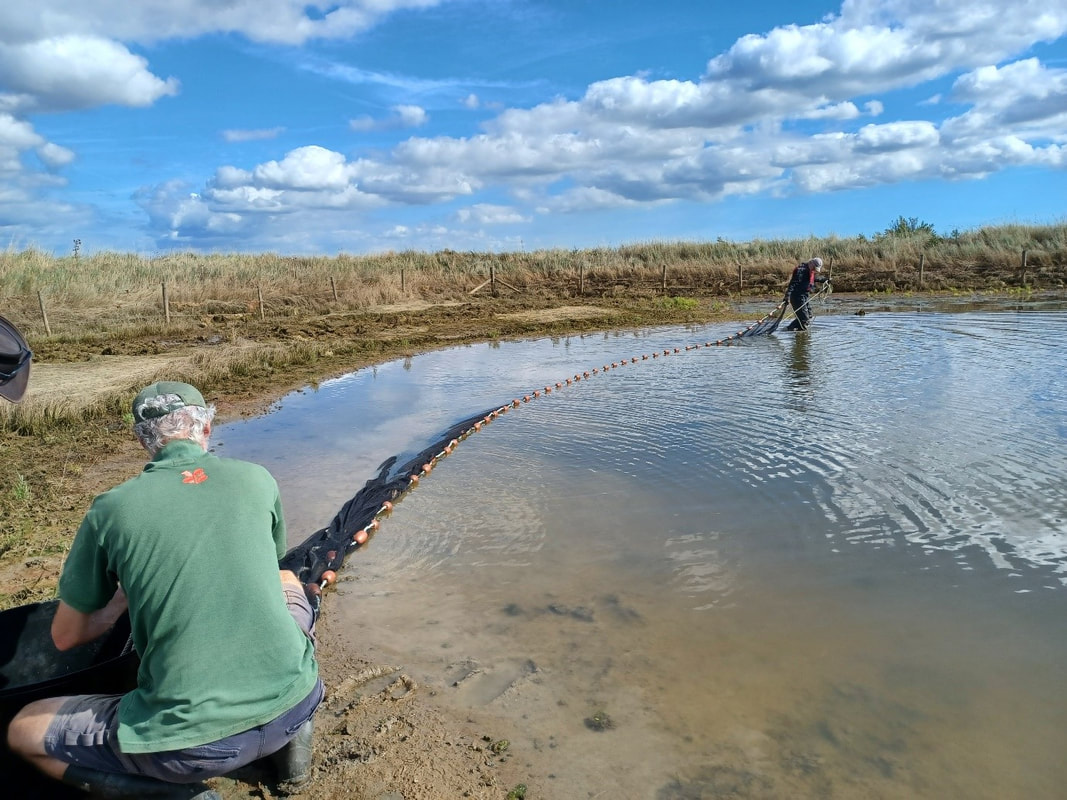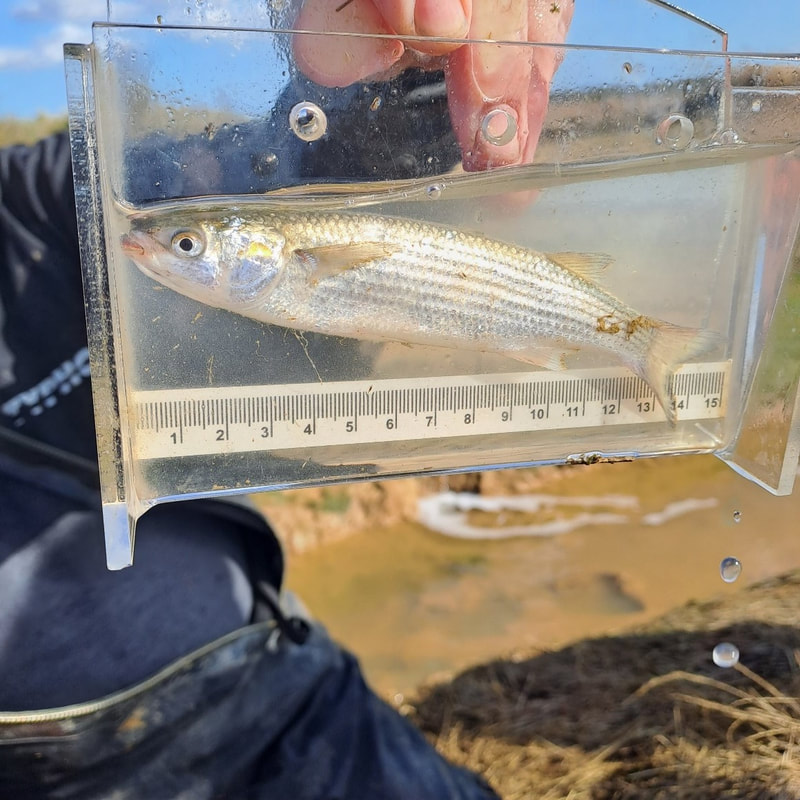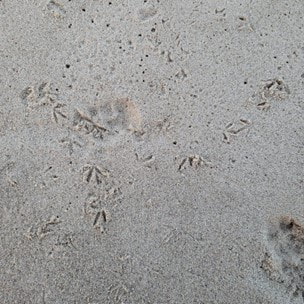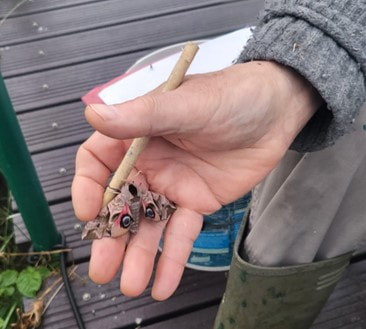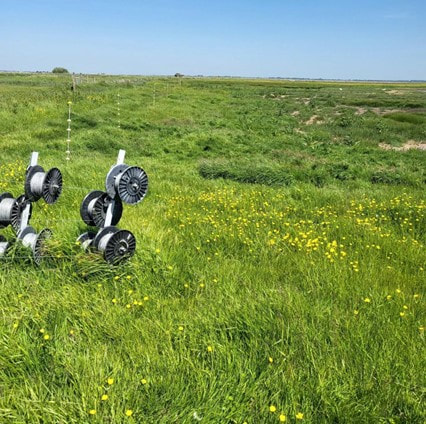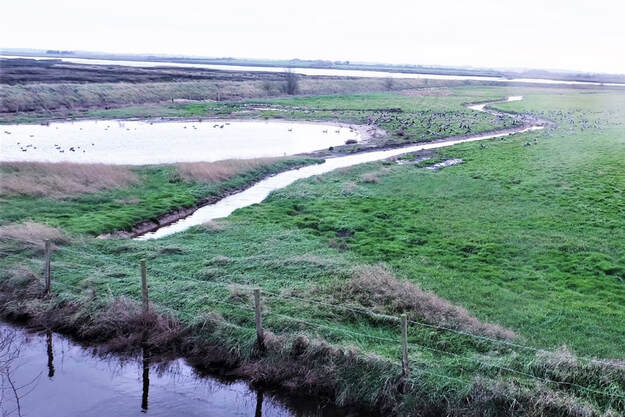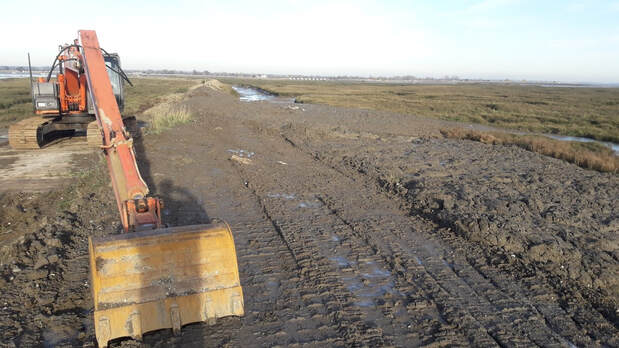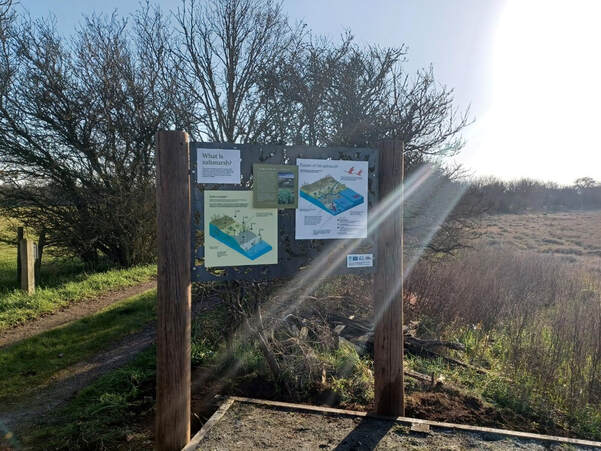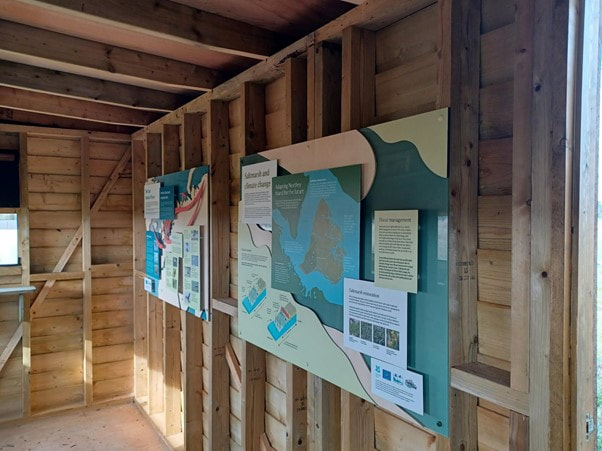|
Blog by Flora Burn, RSPB Research Assistant I was initially employed in 2023, as a HPAI research assistant and following the end of the breeding season; have since been working on the EU funded LIFE on the Edge project. After much perseverance, my goal of being employed in the conservation sector finally came to fruition. It can only be up from here! Donning full PPE in baking heat and pouring rain was made worth it to see some of the beautiful, special spots of the Northumbrian coastline. Home to thousands of seabirds. The Farne Islands was where I spent the majority of my visits through the week – also rotating around Lindisfarne and Long Nanny site. My first visit to the Farne Islands, I had few words. The beauty was extensive. I had never been so close to such a vast expanse of different seabirds, each drowning the other out with a cacophony of calls. Though it was sobering to see the avian flu wash through the colonies. As a research assistant, I monitored the birds daily; collecting and recording data, reminding myself that the data will help us to understand this deadly virus and inform future decisions for the protection of species. After many hours spent watching a variety of species, the sea of black and white (Kittiwakes, Guillemots, Razorbills, Shags) covering the rock faces gradually started to become patchy, with more and more heading off to their wintering grounds. I took my last boat ride back to land, after finally having (just about) found my sea legs, having watched thousands of young grow, fledge and leave. It was time to get back to work in a slightly less wild environment, but no less interesting. I was taken under the wing of a pre-existing team, and joined in on the EU funded project, LIFE on the Edge. My work helping with the creation of a toolkit guiding best practice of conservation projects managing beach nesting birds has taught me a lot. The aim is that it will aid the conservation of beach nesting birds across the UK. In helping to create a ‘toolkit’ it provides a central resource, a hub of information, for site staff, volunteers, members of the public and generally anyone of interest, to access. In essence, a go to guide / manual on how to protect beach nesters. Time was spent reading, researching and writing. Having worked as a Little tern warden previously, joining the project felt like a natural fit – having experienced the hard work and team effort it takes to protect these vulnerable species. I thought back to the days of trudging beaches for miles, lugging fencing, fishboxes, shovels, pleading with visitors to keep away from birds, doing everything possible to protect the little visitors whose numbers are so low, in efforts to protect them. I couldn’t help feeling like a manual would have been useful! I threw myself into the research and collation of information, determined to pull together an informative, accessible document. Some species I already had a good level of understanding of their needs, some I knew less about, such as the Mediterranean gull. Gulls seem to get a bad rep. They are an amber listed species, and with reduced suitable natural nesting sites, much like many other beach nesting species, numbers are dwindling. A few years ago, egg collectors decimated a mixed colony of Black-headed and Mediterranean gulls at Poole Harbour. 60-70% of nests were emptied by illegal collectors overnight, to be sold on and served in a few high-end luxury restaurants. This has a huge impact on breeding success. Disturbance, predation and climate change are all severely impacting seabirds, and we need to do what we can to put measures in place to offer the best chances of survival. Through my work, I have vastly expanded my knowledge of a variety of beach nesting bird species and their conservation practices. It’s encouraging to know that the work being produced will inform UK wide conservation in practice, with detailed sections providing information on species, monitoring methods, predator monitoring (trail cameras, fencing etc), predator management (chick shelters, audible deterrents, diversionary feeding etc), disturbance and management (signage, zoning, patrols etc), habitat management, and engagement with the community. We can only do our bit, and long may it continue. Editor's comment: Please note this toolkit is still being written, but will be placed on the LIFE on the Edge website once it is finalised. All photos are copyrighted: Flora Burn Instagram: @flora_burn
1 Comment
Blog by David Mason, National Trust - Suffolk and Essex Coast Ranger April 2023 was an exciting month for the Northey Island Coastal Adaptation Strategy and the LIFE on the Edge project. After several years of planning and preparation the final parts of the embankment were lowered on April 28th and the tide came into the new starter creek, finally overtopping onto the Eastern fields at high tide on the 4th of May. Hurrah! We have timelapse cameras on site to record progress and these are quite useful in comparing before and after photos. This photo shows the ‘before’ of the pond the water voles were translocated from, with Brent Geese settled in the field. The area on the right is the location of the first managed realignment in England carried out in 1991, which laid the foundation for later realignment projects around the country. This is the same view after the embankment was removed, showing the tide coming over the 1991 realignment. On particularly high tides the incoming water covers the lowered embankment and spills into the pond. Here little egrets and other wading birds can be seen in the shallows. May the 4th be with you. The forces of nature take charge at Northey as the first high tide overtops the new starter creek onto the Eastern field. Saltmarsh plants have already begun growing in the Eastern field, predominantly along the edges of the creek and scrape, whilst birds including lapwing, little egret, redshank and greenshank make use of the new intertidal area Bank Reprofiling The bank in the Northern field has been reprofiled with a shallow back slope to make it more resilient to overtopping by the tide during storm surges. Capped with topsoil from on site this will quickly regenerate and forms part of a new circular walk around the site, open April through to September. A new borrowdyke has been dug out further inland. This drains the field and links to an outlet pipe with flap valve that takes excess water into the saltmarsh. The ditch contains a deeper pond area for freshwater wildlife. The field has been re-fenced and will continue to be used for hay making and grazing which keep the grass in good condition for brent geese, lapwing and curlew to use in the winter. Water vole update- As the landscaping work has finished, the fencing to keep the water voles in their new pond has been removed. It now looks like part of the landscape and the voles are free to roam into the network of freshwater ponds and ditches. Fish survey training National Trust staff undertook fish survey training with Steve from the Institute of Fisheries Management. After laying out fyke nets in the creeks at low tide, we trawled a tidal pool with a seine net while waiting for the tide to rise and bring the fish in to the creeks. The seine net caught a range of small fish including common goby, bass, thin lipped grey mullet, gold grey mullet, stickleback, prawn and shrimp. Larger bass were caught in the fyke net nearest the seaward end of the creek. The surveyed marine life were returned to the creeks and scrapes following identification to continue their journeys around the estuary and further afield. Links to previous blogs about Northey Island Part 1: www.projectlote.life/news/northey-island Part 2: www.projectlote.life/news/ntconservationadaption Part 3: https://www.projectlote.life/news/ntwatervoles Part 4: www.projectlote.life/news/northey-update Thanks to Rebekah Wall, RSPB Little Tern Volunteer, for this lovely guest blog. Conservation is something you’ll commonly find on the news but is such an important topic for the generation these days. To take part in it is something even more important and wonderful. Conservation is my career path and to have the option to become a volunteer is very rewarding and has been something I have done since graduating from University. I applied to be a bird warden for the RSPB in April (2023) for something new to volunteer for, to improve my mental health, and to be more involved in the current need to support conservation and breeding opportunities for the Little Terns. To be given the opportunity to work amongst RSPB staff and experienced volunteers and to be working closely with the Little Terns, a thrill of excitement made me ecstatic, and I was looking forward to starting my shifts. As well as actually working alongside the Little Terns, the fences needed to be put up at Winterton-on-sea and at Eccles. Many volunteers popped up to help and it was interesting to talk with the new and experienced volunteers about what to expect from a shift and how to engage with the public and their dogs. During the induction, one of the staff spoke about the night shifts, the golden hour that we could witness, and the experiences we could obtain. Instantly I knew I wanted to do as many night shifts as I could, fitting it around my day job. I began my first night shift at 10 p.m. in the middle of June, wrapped up warm with many layers, thermals, waterproofs, a woolly hat, gloves, flask filled with hot coffee and snacks. Sitting in a camping chair can be very comfy until it gets very cold. Fortunately, blankets were available to use and sudden spurts of bats and moths flew over one's head and gave me a buzz, excitedly looking for more wildlife in the sky. The night shifts were so different from the day shift. As said by previous volunteers, you get to witness the golden hour which was so magical to see. You have to watch the birds wake up from their hiatus as they are always on the watch, protecting their eggs, chicks, and colony. To witness them fly up, fluttering over the sea and quickly in dive to catch any amongst the Clupeidae sp. to give their chicks the first meal of the day. Listening to their calls is so distinct, made my heart flutter. And the first time I saw a chick, my heart burst into happiness, knowing for a fact this is the environment I want to be in. How small they are! Little balls of speckled fluff. During the night shifts, you literally have to be the watchful eye, a protector to help the success of the breeding Little Terns. To physically chase away the predators with a shaker (a bottle with small stones and pebbles in it). Whether they are flying raptors and four-legged mammals - muntjacs for the eggs, foxes for the eggs and chicks, a few domestic cats now and again, and the occasional squirrel. Finishing a night shift every morning is very different from the last. One morning, driving on my way home from a night shift I happened to come across a situation quite bizarre. Two Rheas were running on a country road right in front of me in the car. Completely bewildered I thought I may have been over-tired. I managed to snap some shots and pass them on to the Little Tern group. A few hours later, I was informed that they were from a farm and had escaped, I saw two of the twelve that were roaming around Norfolk. As well as strange occurrences, I was able to witness a couple of moth traps being unveiled! The beauty of the elephant hawk moths to the peppered moths was amazing and enticing to watch. Working as a bird warden is so much more than looking after the birds, you are able to gain transferable skills, work as a team, get the chance to take part in other events such as witnessing kestrel chicks being ringed, working on RSPB sites such as Berney Marshes engulfed in magical greenery and wildlife, many bird species and mammals and public days such as ‘’Smooch your Pooch’’ promoting dogs on leads during the breeding season of the Little Terns. Being given the chance to take part in volunteering alongside the RSPB for the past five months has been an amazing opportunity that I have thoroughly enjoyed and look forward to the next season.
Blog by David Mason, National Trust - Suffolk and Essex Coast Ranger ‘Working with the grain of nature yields the best chance of maintaining a healthy and beautiful coast for the future, a coast that is great for people and for wildlife.’ – Northey Island Coastal Adaptation Strategy Project Vision The UK government has recognised the importance of the East Atlantic Flyway, a migratory bird route over western parts of Europe including Yorkshire, Lincolnshire, Norfolk, Suffolk, Essex and Kent. In recognition of its vital importance to bird populations and wildlife it has joined the list of seven sites put forward to join the list of World Heritage sites. The area sees huge transient bird populations pass through every year as the seasons change, and the River Blackwater in Essex, including Northey Island, is one of its hotspots. More space created for birds. The overhead powerlines across the island were removed last year and replaced with underground cables. Once the flightline was clear the brent geese that winter here, along with lapwing, curlew and godwit, began using the eastern and southern field, areas of the Island they had previously avoided. The highest number of geese since 2015 (1710) was recorded on the WeBS count, along with the highest count ever of dunlin (3875) roosting at high tide. Following the managed realignment, this area in the eastern field is designed to be underwater at high tide. It will retain water when the tide goes out and will develop as a saline lagoon. The geese enjoyed the shelter of the sea wall over the winter and used all the grassland on the island. North West Wall beneficial use of dredged sediments (BUDS) Further sediment dredged from Maldon harbour has been placed to enhance the saltmarsh in this area as part of an ongoing project. Oystercatchers nested just beyond the placed mud on a patch of gravel. We are hoping other birds may use the new nest boxes placed on top of the cut down power poles left in the eastern field. Water vole update Pond marginal vegetation is well established in the main new pond and is providing food and shelter for the translocated voles. A pair of mallard also nested in the vole enclosure and hatched 10 ducklings. Signs of water voles burrowing in the pond banks and feeding have been found with the characteristic diagonal cut on the small piles of vegetation. Later in the year they will pull these into their burrows as a winter food source. A new extension fence has been installed along a connecting ditch to allow population expansion and accommodate any further voles found during the continuing works. The fencing installed to contain the voles will be removed when the works are finished, and they will have access to all the freshwater bodies on the island. Telling the story of Saltmarsh, Migration and Managed Realignment New interpretation boards have been installed in the hide and on a viewing platform, with a a new bench overlooking the River Blackwater towards Maldon and Heybridge. The three boards illustrate different aspects of the island’s environment. The first board explains the importance of saltmarsh for biodiversity, flood protection and carbon storage and the second highlights the East Atlantic Flyway used by migratory birds. The third board illustrates the work of the LOTE project to realign some of the sea walls to create 10 hectares of new saltmarsh and protect 50-60 hectares of saltmarsh for the next 100 years, predicted to have been lost to the effects of climate change without action. Another new hedge and pond created 276 hedge plants were planted in total and included hawthorn, hazel, wild honeysuckle, spindle, field maple, buckthorn, hornbeam, cherry plum and blackthorn. These species were selected to provide a good variety of fruit, blossom and year-round interest, so will hopefully increase the food sources available for birds and insects on the island. These have been weeded and mulched by the Essex and Suffolk Volunteer Group along with removing old barbed-wire and litter from the saltmarsh. Three new ponds have been created, linked by a connecting ditch, in the north east corner of the island. They have attracted yellow wagtail and mallard. Links to previous blogs about Northey Island
Part 1: www.projectlote.life/news/northey-island Part 2: www.projectlote.life/news/ntconservationadaption Part 3: https://www.projectlote.life/news/ntwatervoles Blog by Dave Blackledge - Site Manager, RSPB Cumbria Coast Reserves RSPB Hodbarrow, on the side of the Duddon Estuary in Cumberland, is the site of an important colony of Sandwich, Little and Common Terns. They breed on land formerly occupied by one of western Europe’s largest iron mines and began nesting there as the mines closed over 50 years ago. Predator fencing and warden protection has seen increasing numbers of seabirds breeding on the island created on limestone slag with vital protected space at a premium. The Life on the Edge project has been helping create more space for our colony to expand. At the start of the project in 2020, we constructed a new island and carried out work to increase the size of the existing one, giving us around 0.75 ha of extra breeding habitat, protected by anti-predator barrier fence. Work has continued this winter to further increase the opportunities for breeding seabirds by creating a third island of 0.25ha. and provide a line of marker buoys along our boundary with the neighbouring caravan park to reduce the incidence of boat disturbance near the islands. The coastal iron mines were enclosed by a seawall at the start of the 20th century to protect works from flooding and thousands of tons of limestone slag from the nearby smelting works were dumped within the wall, providing an ideal substrate for nesting terns when the works were flooded following closure in 1968. Island creation on site therefore centres around lowering, moving and cutting off areas of the slag bank to create disturbance free areas. This increased space has already begun to prove beneficial to a number of species. As terns, Black-headed Gulls and wildfowl began to increase behind the initial predator fence deployed in 2016, Little Terns in particular found it difficult to find space away from other species with their tendency to nest in a more dispersed pattern to other species. The first island created in 2020/21 has attracted most of the 60 or so pairs of common terns to breed creating space for little terns to expand. This season we have a peak of 53 pairs of little terns – a record for the site, and young are beginning to hatch at the time of writing. With HPAI hitting some Sandwich Tern colonies hard, we are delighted to have 596 pairs currently hatching young on site – a little down on recent years, but probably expected with a presumably reduced UK population this year. Creating several islands also has the advantages of reducing the chance of predation – any breach of the predator fence would only allow foxes access to one area of the colony – and separating the colony into areas where interaction and movement will be restricted which may help prevent the spread of HPAI throughout the entire site. Eiders too, have benefitted greatly from the works. With historical averages of around 5 nests, increased breeding space and predator fencing has increased this to 73 pairs, with several large creches seen escaping over the sea wall to the estuary in recent weeks. Along with 2 pairs of Arctic Terns, 12 pairs of Oystercatchers, 9 pairs of Lapwings and 4 pairs of Ringed Plover the busy breeding islands are proving a valuable haven for seabirds along the Cumbrian coast. Previous blogs on RSPB Hodbarrow
Part 1: NEW ISLANDS FOR SEABIRDS AT HODBARROW Part 2: DOING A GOOD 'TERN' Part 3: HODBARROW TERN TRENDS Part 4: 2022 HODBARROW SITE PREPARATIONS |
Archives
April 2024
Categories
All
Photo credits: Oystercatcher by Katie Nethercoat (rspb-images.com)
LOTE Logo credits: Saskia Wischnewski |






